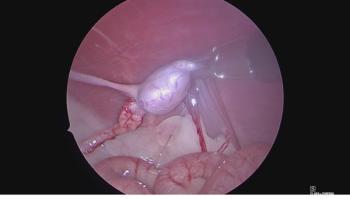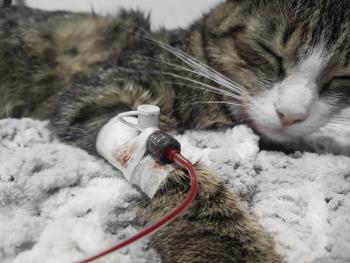
Practical management of hip dysplasia (Part 1): Diagnosis and decisions (Proceedings)
Canine hip dysplasia is a very common orthopedic condition and every small- or mixed-animal practitioner will see cases. Despite this, the management of this syndrome can be frustrating and confusing to the clinician as well as the client. Questions about prognosis, what surgery to recommend (and when), various aspects of medical management and more are difficult to answer definitively.
Canine hip dysplasia is a very common orthopedic condition and every small- or mixed-animal practitioner will see cases. Despite this, the management of this syndrome can be frustrating and confusing to the clinician as well as the client. Questions about prognosis, what surgery to recommend (and when), various aspects of medical management and more are difficult to answer definitively. This session and the next one will address these topics from the standpoint of the general practitioner working in a challenging economic climate. This first session will review the diagnosis of the disease and the meaning of the various findings. Additionally, we will explore the fundamental question of whether to pursue medical or surgical management for a given case scenario.
Pathophysiology of hip dysplasia
Whenever the management of a disease process is not straightforward or well-defined, it is helpful to return to our understanding of the pathophysiology in order to guide our course of action. Clinical hip dysplasia arises from a complex interaction of genetic, nutritional and environmental factors. In a simple way, lax hips, perhaps in combination with inherent conformational inadequacies, allow biomechanical stresses to be placed on the adjacent soft tissues and on the joint itself. The stress on the capsule, muscles, and subchondral bone cause pain in young animals even before the development of arthritis. Eventually, the abnormal forces exerted across the joint will trigger the onset of arthritis which will progress to a greater or lesser degree and cause morbidity – even as the previous causes of discomfort fade. Understanding the sources of the clinical signs will help clinicians choose reasonable treatment courses, even though there is rarely a single appropriate course of action.
Diagnostic options
As with any clinical problem, careful attention to signalment, history and physical examination findings is invaluable even before further radiographs are obtained. For example, pursuing aggressive treatment of a radiographically-diagnosed dog that is actually asymptomatic would likely be inappropriate. Similarly, despite significant disease, some breeds such as English bulldogs rarely require much in the way of intervention – at the least, attention should be paid to searching for other problems such as cruciate ligament tears. Clinical presentations that do not fit the "typical" pattern should be considered as an opportunity to pause and reassess – for instance, young dogs may display marked asymmetry in the lameness associated with hip dysplasia but it would be more likely for such a presentation to be due to panosteitis. Alternatively, an older dog with significant arthritis that suddenly displays lameness may have exacerbated the dysplasia, but is more likely to have sustained a cruciate injury or be suffering from acute spinal disease. Lastly, the physical examination may not provide a definitive diagnosis, but should be consistent with expectations. Findings such as proprioceptive deficits should stimulate a search for other diseases.
Assuming that the initial assessment is consistent with hip dysplasia, radiographs should be obtained. In most cases, standard ventral-dorsal radiographs with the hips extended provide sufficient information. At other times, views such as the PennHIP style or tangential views may be indicated. Radiographs should never be interpreted without also considering the clinical picture.
Treatment decisions – If, when and how
Once sufficient information has been gathered, treatment recommendations must be made. This will also be tempered by the expectations and capabilities of the owners. The initial question is whether treatment is needed or not, followed by the question of whether the treatment should be medical or surgical or a combination of the two. After those questions have been answered, the management becomes more complicated.
Treatment is recommended when the patient is showing clinical signs of morbidity or when a viable option exists to prevent likely disease progression. In most cases, I do not recommend treatment on animals that are asymptomatic. The exception might be cases that are candidates for juvenile pubic symphysiodesis as these cases are usually too young to display clinical signs of disease.
Conservative management is recommended when a viable surgical option does not exist, when waiting for appropriate timing for surgery, or when owner economic concerns preclude surgical management. The selection and incorporation of the various components of conservative management will be discussed most fully in the next session and in the session on management of osteoarthritis.
Both the decision to pursue or avoid conservative management and the decision about which surgical procedure to pursue hinge on an understanding of when each surgical procedure is indicated. A large number of surgical procedures have been advocated to address hip dysplasia. In the simplest terms, the indications for the most common procedures are outlined below.
Total hip replacement: Indicated for cases with severe clinical signs when good function is the primary concern
Triple pelvic osteotomy: Indicated for young animals without obvious osteoarthritis but with significant risk of developing osteoarthritis
Femoral head ostectomy: Indicated when relief of pain is the primary goal and conservative management has failed
Pelvic denervation: Indicated when finances are a concern and conservative management has failed
Juvenile pubic symphysiodesis: Indicated in puppies considered to be at high risk of developing hip dysplasia and that are not intended as breeding animals
These basic premises will serve as the foundation for discussion in this session in order to build a framework upon which to make surgical decisions. Specific examples that follow the general indications will be given as well as examples that illustrate exceptions. Emphasis will be placed on practical steps that general practitioners can utilize.
Newsletter
From exam room tips to practice management insights, get trusted veterinary news delivered straight to your inbox—subscribe to dvm360.




